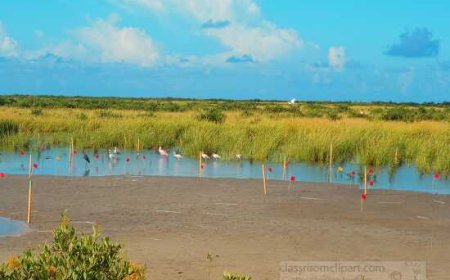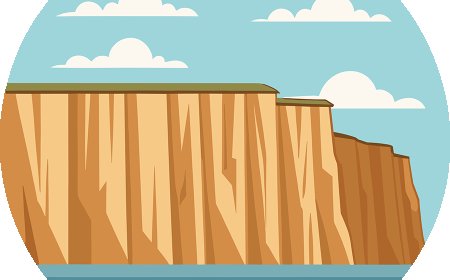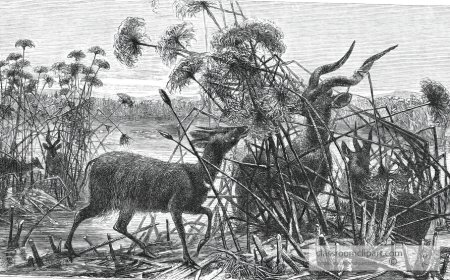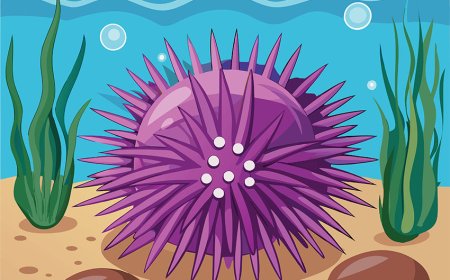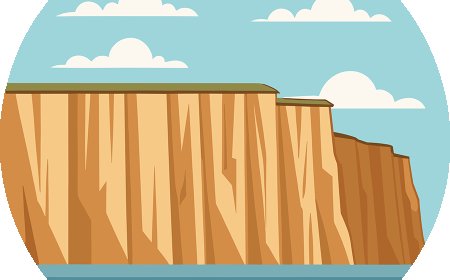Exploring Habitats: Where Plants and Animals Live and Thrive
Discover the different types of habitats around the world, from forests to oceans! This educational article for students aged 8–16 explains what habitats are, how living things adapt, and why they matter. Includes fun facts, vocabulary, and a quiz!
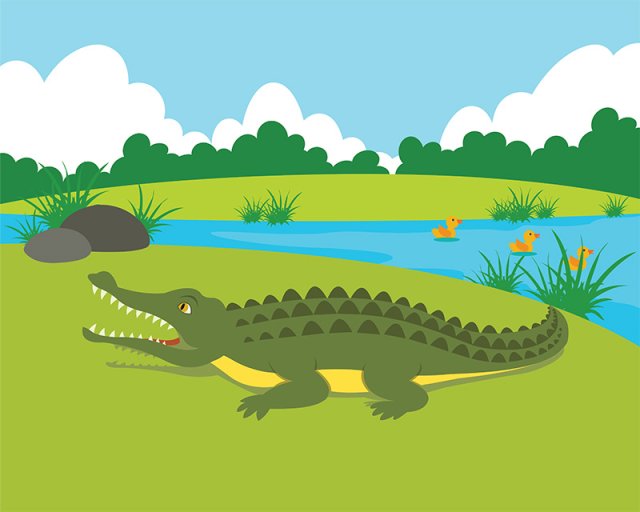

Exploring Habitats: Where Plants and Animals Live and Thrive
Introduction
Have you ever wondered why polar bears live in the Arctic and not in the jungle? Or why cacti grow in deserts but not in rainforests? The answer has everything to do with habitats—the natural homes where plants and animals live. A habitat provides everything a living thing needs to survive: food, water, shelter, and the right temperature. From deep oceans to dry deserts, every habitat is unique, and so are the creatures that live there.
In this article, we will explore what habitats are, the different types of habitats found on Earth, how animals and plants adapt to their homes, why habitats are in danger, and what we can do to help. Along the way, you’ll discover cool facts, a vocabulary guide, and a quiz to test what you’ve learned!
What Is a Habitat?
A habitat is the environment where a plant or animal naturally lives and grows. It's like a neighborhood, but for animals and plants. Each habitat has its own climate, landforms, and kinds of food and water. Habitats also include both living (biotic) and non-living (abiotic) parts. For example, in a pond habitat, the fish, frogs, and plants are the living parts, while water, rocks, and sunlight are the non-living parts.
Types of Habitats:
- Terrestrial habitats: Found on land (forests, deserts, grasslands).
- Aquatic habitats: Found in water (oceans, lakes, rivers).
Major Types of Habitats
1. Forests
- Forests are filled with trees, plants, and animals. They cover about one-third of Earth’s land. Forests can be tropical, temperate, or boreal (taiga).
- Tropical rainforests are warm and wet all year. They have the most kinds of plants and animals on Earth.
- Temperate forests have four seasons and trees like oak and maple.
- Boreal forests are cold and have trees like pine and spruce.
Common animals: Jaguars, monkeys, woodpeckers, deer, bears.
2. Deserts
Deserts are dry areas that receive little rainfall. They can be hot like the Sahara or cold like Antarctica.
- Hot deserts are sandy and dry. Animals come out mostly at night.
- Cold deserts are windy and icy, like in the Arctic.
Adaptations: Camels store fat in their humps. Cacti have thick skins to hold water.
Common animals: Camels, lizards, owls, scorpions.
3. Grasslands
Grasslands have wide-open spaces with grasses and very few trees. They exist in places like Africa, North America, and Asia.
- Savannas (tropical grasslands) have scattered trees.
- Prairies and steppes (temperate grasslands) have colder winters.
Common animals: Elephants, zebras, bison, lions, prairie dogs.
4. Wetlands
Wetlands are areas where land and water mix. They include marshes, swamps, and bogs. They are very important because they clean water and prevent floods.
Common animals: Frogs, alligators, ducks, dragonflies.
5. Oceans
Oceans cover over 70% of the Earth’s surface. They are salty and have many different zones, from the shallow coast to the deep sea.
Common animals: Whales, jellyfish, dolphins, sea turtles, coral.
6. Freshwater Habitats
These include lakes, rivers, ponds, and streams. They are not salty like oceans.
Common animals: Fish, frogs, beavers, insects.
7. Arctic and Alpine Habitats
These are cold, snowy environments found in the polar regions or high mountains. Only specially adapted animals can live here.
Common animals: Polar bears, snow leopards, penguins, caribou.
Adaptations: How Plants and Animals Survive in Habitats
To live in a certain habitat, plants and animals must adapt. Adaptations are changes that help living things survive. These can be physical traits or behaviors.
- Camouflage: Blending in with surroundings (like a chameleon or snowshoe hare).
- Migration: Moving to a new place during certain seasons (like birds flying south for winter).
- Hibernation: Sleeping through cold months (like bears and groundhogs).
- Water storage: Cacti store water in their stems to survive droughts.
Why Habitats Matter
Habitats are more than just homes. They keep Earth’s ecosystems healthy. Forests clean the air, wetlands filter water, and oceans help control the climate. When habitats are healthy, the planet is healthier too.
Threats to Habitats
Unfortunately, many habitats are in danger due to human actions.
- Deforestation: Cutting down forests for buildings or farms.
- Pollution: Trash, chemicals, and oil spills harm water and land.
- Climate change: Rising temperatures affect animal homes and food sources.
- Urbanization: Cities and roads destroy natural areas.
When habitats are destroyed, animals and plants may become endangered or even extinct.
Protecting Habitats
We can all help protect habitats!
- Recycle and reduce waste.
- Plant trees and support native plants.
- Use less water and electricity.
- Support wildlife parks and conservation groups.
- Learn and share knowledge about endangered habitats.
Even small actions can make a big difference.
Fun Facts About Habitats
- A single tropical rainforest tree can host over 1,000 different insect species!
- Mangrove trees can grow in salty water and protect coastlines from storms.
- The deep ocean is so dark that some animals make their own light (bioluminescence).
- The fastest land animal, the cheetah, lives in grasslands and can run up to 70 mph!
- Wetlands are sometimes called the "Earth’s kidneys" because they clean dirty water.
Vocabulary List
Habitat - The natural home or environment of a plant or animal.
Adaptation - A change in a living thing that helps it survive in its habitat.
Camouflage - Coloring or shape that helps an animal blend in with its environment.
Ecosystem - A community of living and nonliving things working together in a habitat.
Biotic - The living parts of an environment.
Abiotic - The non-living parts of an environment (like sunlight, water, soil).
Migration - The seasonal movement of animals from one region to another.
Hibernation - A deep sleep that helps animals survive cold winters.
Endangered - At risk of disappearing or becoming extinct.
Deforestation - The removal of trees and forests, often leading to habitat loss..
Kid-Friendly Summary
Habitats are the special places where animals and plants live. Every habitat is different—some are wet, dry, cold, or hot. Living things have cool ways to survive, like camouflaging, hibernating, or migrating. But many habitats are in danger because of pollution, cutting down trees, and climate change. We can all help by protecting nature, recycling, and learning more. Whether it’s a jungle, a desert, or the deep sea, every habitat is important—and full of amazing life!
Interactive Quiz: What Did You Learn About Habitats?
Choose the best answer for each question.
What do all habitats provide for the organisms that live there?
A. Toys and games
B. Music and sunlight
C. Food, water, and shelter
D. Cars and computers
Answer: C
Which of the following is NOT a type of habitat?
A. Forest
B. Desert
C. Zoo
D. Ocean
Answer: C
What is an example of an adaptation?
A. Riding a bike
B. A bear hibernating in winter
C. Watching TV
D. Eating fast food
Answer: B
Why are wetlands important?
A. They are fun to swim in.
B. They make the land dry.
C. They help clean water and prevent floods.
D. They grow deserts.
Answer: C
What does camouflage help an animal do?
A. Fly faster
B. Be seen more easily
C. Stay cool
D. Hide from predators
Answer: D


















































